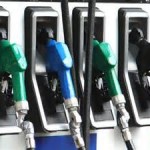
Portland, Ore.– “After falling for a record 123 consecutive days, the national average for regular unleaded has ticked up overnight for the first time since September 25. For the week, the national average dips one-and-a-half cents to $2.04 per gallon.
The Oregon average plunges another nine cents to $2.14 a gallon and has fallen for 63 consecutive days,” says AAA Oregon/Idaho Public Affairs Director Marie Dodds. “After dropping for an average of more than a penny a day for the first 16 days of 2015, the average drop in the national average for the following ten days was just half a penny. Last night, the national average ticked up half a cent. This is largely reflective of a number of Midwestern states where prices have moved higher over the past week due to a series of refinery issues in the region.”
The current U.S. and Oregon averages remain at their lowest prices in nearly six years. The national average is at its lowest price since April 2009 while Oregon’s average is at its lowest price since March 2009.
The falling prices at the pump are a product of global oil prices tumbling to multi-year lows. While increased seasonal demand and maintenance at refineries may result in a typical 30- to 50-cent increase in pump prices this spring, AAA expects the national average to remain below $3 per gallon during 2015 barring any major increase in the global price of crude.
This week’s major snowstorm in the Northeast has the potential to pressure gasoline prices immediately higher on distribution concerns, but the longer term impact is expected to be downward pressure on pump prices from lower demand, as drivers stay off the roads. At the same time, increased demand for diesel fuel, which is also used to heat homes and power generators during electricity outages, would be expected to pressure diesel prices higher during the duration of the storm’s impact.
As outlined above, the trend of falling weekly averages is beginning to ease. While 40 states and Washington, D.C. are registering savings over the past seven days, drivers in ten states are paying a bit more at the pump over the same period. Oregon is one of 22 states and Washington, D.C. posting savings of a nickel or more.
Almost all drivers in the U.S. are continuing to experience savings at the pump compared to one month ago. The only state bucking this trend is Indiana, where the price has inched upward by fractions of a penny versus one month ago due to regional production issues. Oregon is one of 35 states and Washington, D.C. posting discounts of a quarter or more per gallon.
Yearly comparisons continue to reflect the most dramatic discounts, largely due to multi-month declines in the price of retail gasoline. Alaska (-92 cents) and Hawaii (-77 cents), the nation’s most expensive retail markets, are the only two states not posting yearly discounts of at least $1 per gallon.
The death of Saudi Arabia’s King Abdullah caused the global oil markets to slightly rally this past week on rumors that OPEC’s largest producer could possibly reassess its production levels and potentially decrease the current glut in global oil supply. King Abdullah’s successor, Crown Prince Salman, calmed the market by deciding to keep the current oil minister in his position and signaling no plans to change the country’s current production plans. By sustaining its current production levels, the resiliency of high-cost production countries such as the U.S. and Canada will continue to be tested as the market is left to self-regulate at price levels that have not been seen in more than half a decade.
At the close of Monday’s formal trading on the NYMEX, West Texas Intermediate settled down 44 cents (-.97 percent) at $45.15 per barrel, its lowest price in six years. Today WTI is trading around $46 a barrel, same as a week ago. Crude prices are down about 14 percent over the last month and are about $51 lower than a year ago. Crude oil has lost more than half of its value since June 2014 when it was trading around $107 per barrel.
For the 12th week in a row, there are no states with an average price for regular unleaded at or above $4 a gallon. Forty-nine states and Washington D.C. have averages below $3 per gallon, same as last week. Twenty-seven states are below $2 a gallon, up from 25 a week ago.
Hawaii has the most expensive gas in the country for the 118th consecutive week at $3.23, followed by Alaska at $2.70, California at $2.45 (down a nickel and up from fourth last week), New York at $2.43, and the District of Columbia at $2.41. Washington is 11th down from 10th last week at $2.15 (down nine cents). Oregon is 12th down from 11th last week at $2.14 (down nine cents). Idaho is 46th for the second week in a row at $1.86 (down three cents). Missouri has the cheapest gas in the nation for the 10th week in a row at $1.78 a gallon (up two cents).
Diesel prices are also falling and both the national and Oregon averages are less than $3 a gallon. The national average loses six cents to $2.83 a gallon. Oregon’s average dips a dime to $2.64. Diesel is at or above $4 a gallon in just one state, same as last week. Hawaii is most expensive at $4.56, followed by New York at $3.30, Connecticut at $3.21, Alaska at $3.20 and Pennsylvania at $3.15. California is ninth for the second consecutive week at $2.99 (down six cents). Idaho is 31st up from 32nd last week at $2.79 (down six cents). Washington is 32nd down from 28th last week at $2.79 (down eight cents). Oregon is 45th down from 41st last week. A year ago, the national average for diesel was $3.87 and Oregon’s was also $3.87.
If you see local news happen, call the Horizon Broadcasting Group News Tip Hotline at 541-323-NEWS, or email us.















